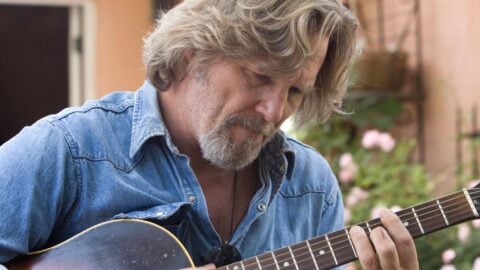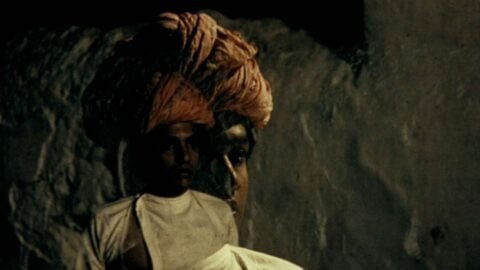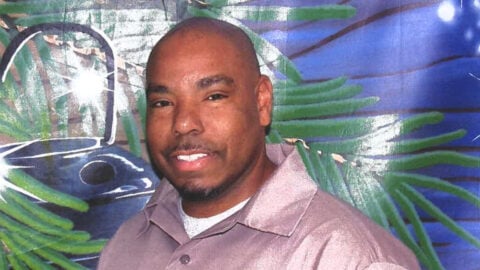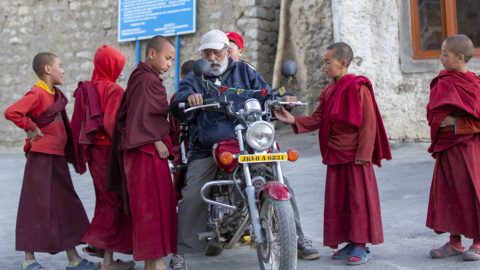Queer & Now & Then: 1997
In this biweekly column, I look back through a century of cinema for traces of queerness, whether in plain sight or under the surface. Read the introductory essay.
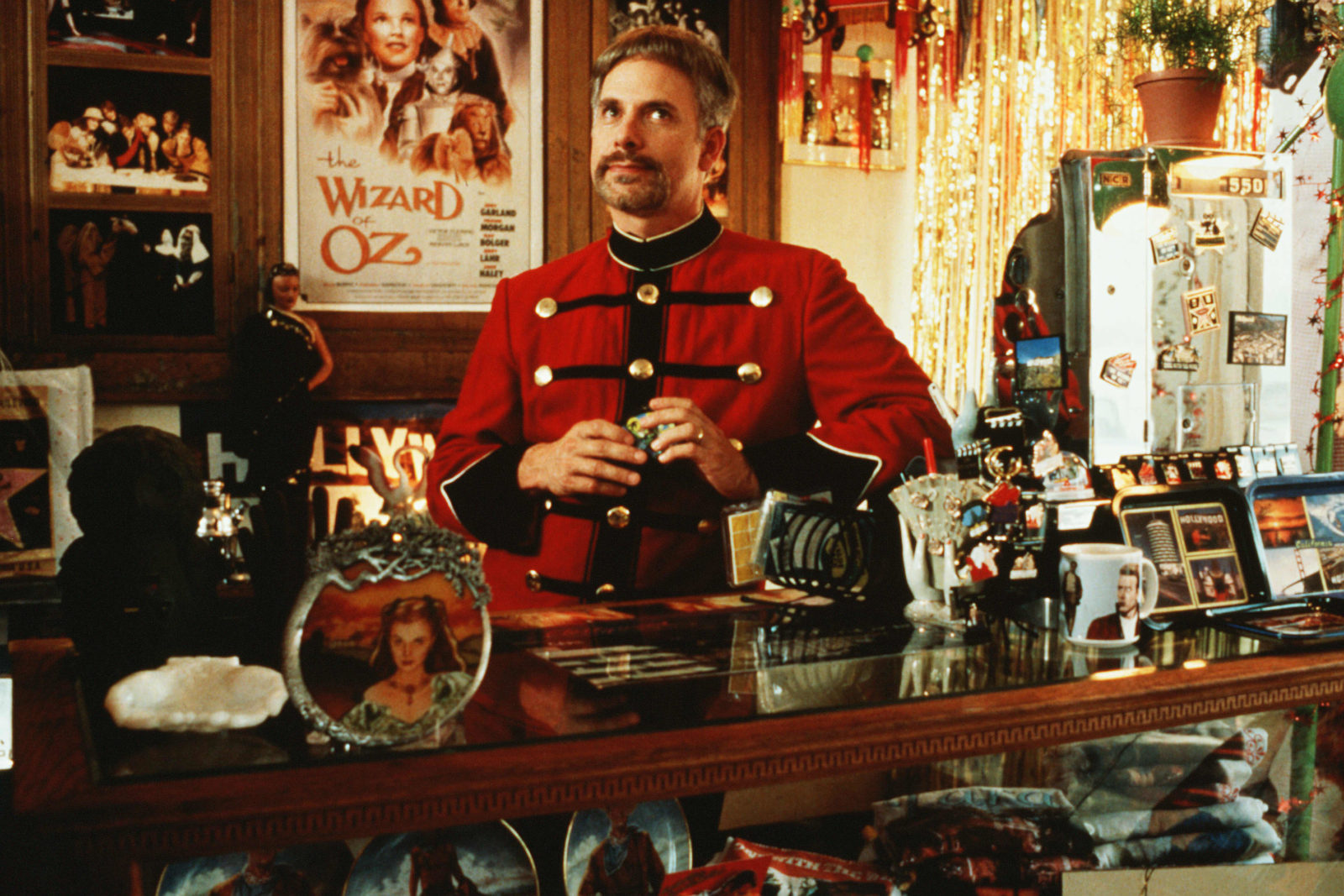
There’s such a fine line between stupid and clever, as we were taught by the heavy metal brainiacs of 1984’s This Is Spinal Tap. Thirteen years later Christopher Guest, who plays Nigel Tufnel in that original mock-doc, directed Waiting for Guffman, a follow-up that treads a fine line of another kind. Here, Guest plays the similarly softheaded Corky St. Clair, a small-town community theater director mounting a musical celebrating the sesquicentennial of Blaine, Missouri, the “Stool Capital of the World.” Corky has just enough “off-off-off-off-Broadway” experience in New York to leave Blaine’s councilmembers awestruck, and he’s treated like a returning hero and untouchable genius. This despite the obvious qualities that make him stick out like a sore thumb in this Middle American Nowheresville. With his ever-present sibilant “s,” his Judy Tenuta T-shirt, the feathery toupee that gives him the bearing of a grey-headed chickadee, and his bitchy theatricality, Corky is, well, a little different from the town’s other men, a difference chalked up time and again by others solely to his brand of flamboyant creativity, which reveals these provincial folks’ insecurities as much as their biases. Though he fits all the comic stereotypes of a gay man, Corky does not identify as such—but he also doesn’t identify as anything other than a theater impresario. For this likeable outsider figure, Waiting for Guffman waffles between offering a kind of sweet kindred sympathy and serving him up in vulgar parody. A fine line indeed, and one that Guest’s films have consistently walked.
The first in a series of beloved yet vaguely discomfiting comedies that Guest made with a recurring troupe of collaborators, co-written with Eugene Levy after being developed via workshopped improvisation, Waiting for Guffman set a sturdy, if queasy template for Best in Show, A Mighty Wind, and For Your Consideration: a group of mostly good-natured, but in some way fame-thirsty has-beens and never-weres come together for some anticipated climactic performance or ceremony and in the process reveal specifically American traits of delusion and perseverance, and end up in a state of disillusionment. Even their small triumphs are capsized by grandiose dreams, as epilogues show them still trying to peddle their wares in some pathetic subset of the entertainment business. What makes these films uncomfortable for some is the comic delight they seem to take in dramatizing the characters’ failures, their only crimes to have been chasing their dreams in the first place: they don’t crave wealth as much as acknowledgment for whatever talents they have or perceive themselves to have.
As a film about amateur theater players, Waiting for Guffman could be seen as the most “mocking” of this cycle of films, as the disparate locals that come together to star in Corky’s Red, White, and Blaine are, despite the defenses and enthusiasms of those on-screen, uniformly mediocre singers, dancers, and actors. As the final depiction of the surprisingly serviceable play proves, however, their talent—or lack of it—is beside the point: this elaborate performance exists to validate the townsfolk in the audience more than the actors onstage, a back-patting reminder of 150 years of this small burg’s alleged historical centrality in the American project. (Blaine is known for its footstool manufacturing first and foremost, not to mention President McKinley’s visit during a whistle-stop tour near the turn of the century.) This makes Corky even more of an outsider, as this play couldn’t possibly fulfill his own desperate career needs—which doesn’t stop him from putting all his eggs in this sad little basket. After finding out that a New York theater critic he knew from his days in the Big Apple, Mort Guffman, has agreed to come to Missouri and see Red, White, and Blaine, he summarily tells his cast, “We might be going to Broadway!” In saying this, he sets up the production—and his own undaunted pursuit of respect—as a failure from the start.
Anxiety-ridden, given to prima donna fits, cursed with a maniacal need to impress, and not particularly sharp, Corky St. Clair is nevertheless generally sweet-souled and impossible to hate. How we feel about him and how we fear the film might want us to feel about him has been one of the main sources of tension around Waiting for Guffman since its release more than 20 years ago. Corky is undoubtedly a gay stereotype; he minces and lisps, he dresses flamboyantly and talks expressively (if rarely succinctly or intelligently), and he goes into sleepy-eyed reverie when he mentions wearing chaps or buying pantsuits for his wife “Bonnie,” whom no one in town has ever seen. In these ways, Guffman fits a little too snugly into a debasing tradition of stock homosexual caricature—in which male effeminacy is depicted as inherent funny—stretching back to vaudevillians like Gene Malin (a major mover-and-shaker of the “Pansy Craze” in Jazz Age New York) and Hollywood Golden Age supporting actors like Franklin Pangborn to swishy characters like Roger De Bris in The Producers (1968) or Blaine Edwards and Antoine Merriweather in In Living Color’s “Men on Film” skits (1990-1994). At the same time, these figures of gay minstrelsy have been frequently studied and enjoyed by gay viewers (this one included), revealing the double-bind of representation: that their visibility and unapologetic forthrightness as effeminate men somehow counteracts the potentially dangerous offenses. Of course, a major difference between, say, Harvey Fierstein’s arms-flailing best-supporting-nelly act in Independence Day (1996) and Corky’s own freak-outs (“I’m gonna go home and I’m gonna bite my pillow!”) is that Fierstein is an out queer actor owning his own identity, however clichéd, while Guest is an ostensibly straight actor gussied up in gay drag.
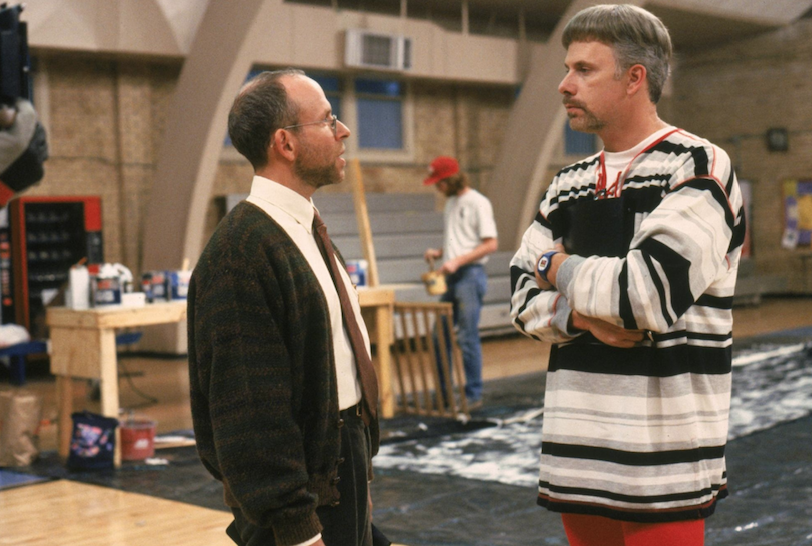
Further complicating matters is that much of Guffman’s humor springs from the fact that Corky remains closeted, despite the obviousness of his homosexuality—at least to us. Blaine in 1997 is clearly not the kind of place that would have a pride parade; as with many Americans, Corky takes enormous pride in his work, not his identity. It’s made clear throughout that sexuality—and sex in general—is not a topic the people of Blaine would feel comfortable with. The other men he casts in the show are established as definitively heterosexual: Dr. Allan Pearl (Eugene Levy) is a married Jewish dentist, awkwardly trying to parlay his skills as an affable goofball into theater; real-estate agent Ron Albertson (Fred Willard) is an ego-driven chauvinist always quietly putting down his fellow performer wife Sheila (Catherine O’Hara); and Johnny Savage (Matt Keeslar) is the local stud, a 6-foot-2 car mechanic whom Corky courts for a role, amidst suspicious scowls from the kid’s father (Brian Doyle-Murray). Throughout Guffman, we meet only one other man in town who seems to be gay, the wide-eyed, Howdy Doody–ish Steve Stark (Michael Hitchcock), a councilman and pharmacist so enamored of Corky (“There’s only one other person in the world who can do all that and that’s Barbra Streisand!” he kvells during intermission) that Corky’s constant obliviousness to him becomes its own nested melancholy drama. Cutaways to Steve’s deeply felt reactions to the show (screeches of pleasure at one point, tears streaming down his face during the treacliest song) become a kind of window to the desperate, desirous soul of Blaine.
There have been other gay characters in Guest and Co.’s films, most notably Best in Show, which features both gay male long-term partners (proud Shih-Tzu owners Michael McKean and John Michael Higgins) and an amusingly unlikely lesbian couple (daffy gold-digger Jennifer Coolidge and butch trainer Jane Lynch), and in For Your Consideration’s film within the film Home for Purim, which centers around Parker Posey’s Rachel Pisher bringing home her girlfriend Mary Pat (Rachael Harris) for the holidays. For all these characters, the fact of their gayness is, in a sense, the joke, which fits into a very common bias in American comedy; it’s a strain that continues to this day, when even ostensibly enlightened mainstream comedy, such as Saturday Night Live and 30 Rock, regularly have trotted out the revelation of a minor character’s gayness for a punch line. A heterosexual creation, Corky undoubtedly fits into this dubious, even harmful lineage, but as a camp figure, and an endlessly quotable, strongly individualistic square peg, he has been recouped by some queer viewers as a strange sort of antihero. After all, every character is satirized within Guest’s somewhat merciless framework—at least Corky gets to retreat to his own fortress of solitude: a New York City memorabilia store where he sells My Dinner with Andre action figures and Remains of the Day lunchboxes.
So what are we to do with Corky St. Clair, especially in an age when we are meant to sniff and snuff out the slightest intimation of offense? Twenty years make a difference: this was the year of Frank Oz and Paul Rudnick’s In & Out, a comic takedown of gay panic that was considered progressive but today seems thankfully antiquated. Corky’s bearing, his mannerisms, his wild overconfidence and muddled philosophical references (“It’s a Zen thing, like how many babies fit in a tire”) are all funny, but there’s much more here than mockery based on identity. Guest’s satire often resides in the verbal knots people tie themselves into when desperately trying to express themselves. (Corky is a brilliantly conceived example of improvisation resulting in a character especially bad at talking extemporaneously.) At the same time, there’s a sad irony to the great pains Corky takes to hide his presumed self away from the public, since the public’s approbation is exactly what he craves, like so many performers. The bizarre things he says can’t entirely be trusted, such as when he wistfully reminisces about his young self as “right out of the navy, fresh off a destroyer, with a dance belt and a tube of Chapstick”—but one can also understand his need to self-mythologize in a hopelessly straight world that has no place for those like him.
One tiny scene speaks volumes about the casual homophobia in Blaine and around us every day: during a dance exercise at rehearsal intended to loosen up the performers, Willard’s Ron grabs a scarf and shimmies around both women in the show, his wife Sheila and Posey’s ingénue, Libby. He then teases at doing the same to Dr. Pearl, only to quickly rescind the scarf and then make a wild, outsized show of his incredible joke. The mere thought of two men dancing together sends him and everyone else into paroxysms of hilarity. Corky, meanwhile, stands by, accompanying on his drums, blissed out, always playing along. In this one quick flash, we are invited to understand why even someone like Corky might stay in the closet. The joke is always on us.
Michael Koresky is the Director of Editorial and Creative Strategy at Film Society of Lincoln Center; the co-founder and co-editor of Reverse Shot; a frequent contributor to the Criterion Collection; and the author of the book Terence Davies, published by University of Illinois Press.



